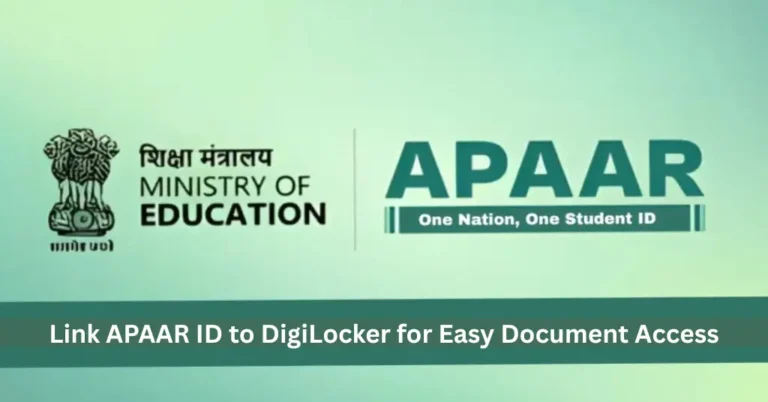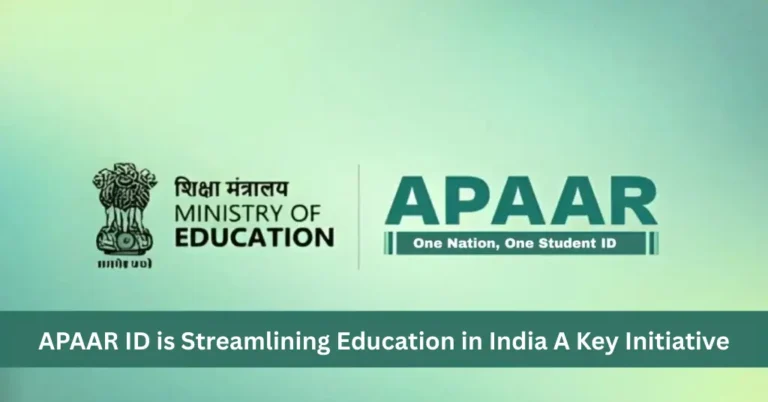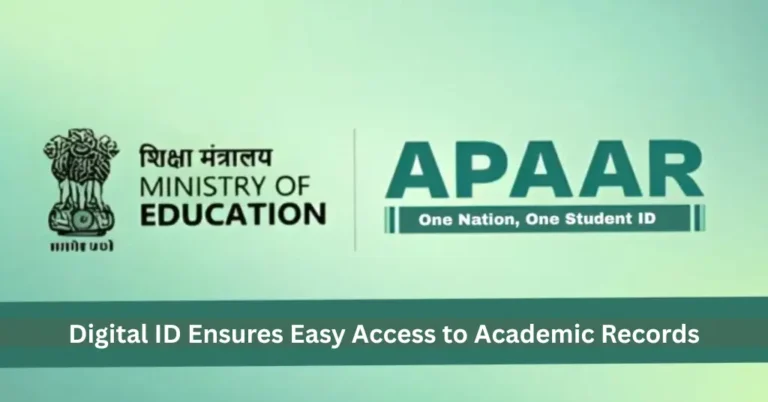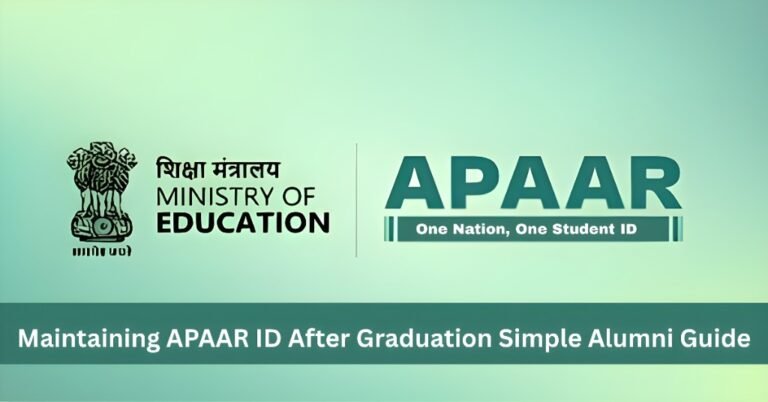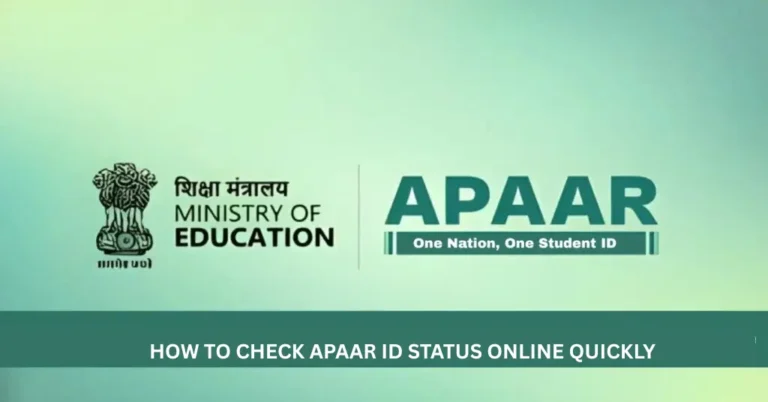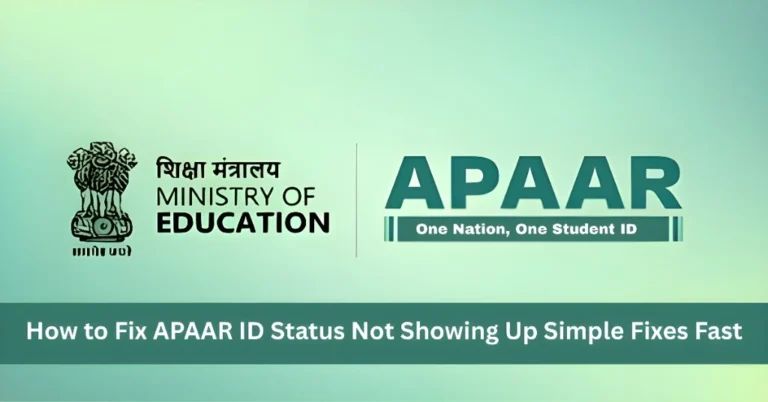Students Affected from APAAR ID Accessibility Challenges at simplifying student data management under India’s National Education Policy (NEP) 2020. While it promises many benefits, rural students are facing significant accessibility challenges. In this article, we explore the issues rural students encounter and what can be done to bridge the gap.
Understanding APAAR ID A Step Towards Educational Accessibility
The APAAR ID is a 12-digit unique identifier assigned to every student. It’s designed to centralize academic records, making it easier to access Streamlining Student Data. But for students in rural India, this seemingly simple process often brings more problems than solutions.
The Digital Divide How Rural Students Struggle
Limited Access to Digital Resources
In many rural areas, access to smartphones, computers, and reliable internet is still a luxury. This digital gap makes it nearly impossible for students to register for their APAAR IDs or access their academic records through platforms like DigiLocker.
Slow Internet Speeds
Even when devices are available, many rural areas still struggle with slow or intermittent internet connections. This results in failed attempts to access or update the APAAR ID, causing delays in registration for exams or admissions.
Data Mismatches A Major Roadblock for Rural Students
Aadhaar Data Discrepancies
Rural students often face issues with Aadhaar data mismatches. These discrepancies—such as incorrect names, misspellings, or outdated addresses—can make it difficult to generate an APAAR ID. In remote areas, accessing Aadhaar correction services can be time-consuming and inconvenient, which further complicates matters.
Challenges in Data Entry
Teachers are responsible for entering student details into the APAAR system. In rural schools, where administrative support is often limited, this process can be riddled with errors, further delaying the issuance of APAAR IDs.

Parental Consent and Awareness A Hurdle for Many
In rural India, many parents are either unaware of the APAAR ID system or unwilling to share sensitive personal data. This lack of awareness and trust in digital systems often prevents rural students from even starting the process. Additionally, parental consent is a requirement for minors, but without proper understanding, consent is often delayed or not given.
For some families in rural areas, the costs associated with correcting data, traveling to Aadhaar centers, or even accessing the internet can be prohibitive. These financial constraints add yet another layer of difficulty for students trying to navigate the APAAR ID system.
Solutions for Rural Students
Increase Awareness: Conduct outreach programs to educate rural communities about the APAAR ID system, its benefits, and the importance of registering.
Improve Infrastructure: Build and upgrade digital infrastructure in rural areas, ensuring that students have access to computers, internet services, and other digital resources.
Simplify the Process: Streamline the process for updating Aadhaar details and reduce bureaucratic barriers that prevent students from accessing their APAAR IDs.
Financial Support: Provide subsidies for rural families to cover costs related to Aadhaar updates, document corrections, and internet access.
APAAR ID and why is it important for students?
APAAR ID is a 12-digit identifier that links a student’s academic records across India. It simplifies accessing documents like marksheets, degrees, and transcripts. For rural students, it promises easy transitions between educational institutions but comes with significant challenges.
How can rural students overcome the lack of internet access?
Students can visit local Common Service Centers (CSC) or cyber cafes in nearby towns to access the internet and register for their APAAR ID. Government schemes are also being rolled out to provide affordable internet access in rural areas.
What should a student do if their Aadhaar data doesn’t match the school records?
Students should visit their nearest Aadhaar update center or contact local authorities for assistance. In rural areas, community leaders or local government offices can assist in correcting these discrepancies.
Is the APAAR ID mandatory for rural students?
Although the APAAR ID system is officially voluntary, many schools and educational boards are treating it as mandatory for exams and college admissions, particularly in urban centers.
How can financial barriers be overcome for rural students needing APAAR ID?
Some state governments provide subsidies or assistance for educational costs. Additionally, NGOs and local authorities may help cover transportation and Aadhaar update costs for families in rural areas.
Final Words
The APAAR ID system is an excellent tool for digitizing academic records, but its benefits cannot be fully realized without addressing the specific challenges faced by rural students. By improving digital access, educating communities, and offering financial support, we can bridge the gap and ensure that every student, regardless of their location, can benefit from this initiative.
If you’re a student or parent from a rural area facing challenges with the APAAR ID system, don’t hesitate to reach out for assistance or clarification. Together, we can make this system work for everyone.
